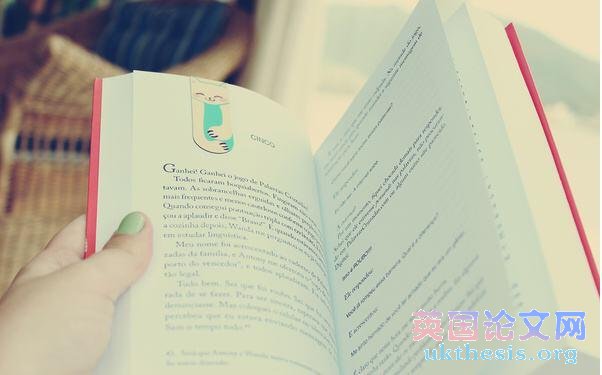英國(guó)dissertationLiterature Review怎么寫(xiě)?Literature Review寫(xiě)作方法

04-15, 2017
不少英國(guó)留學(xué)生碰到Literature Review的時(shí)候總會(huì)傻乎乎的和其他dissertation混淆,或是根本無(wú)從下筆。Literature Review,其實(shí)并不是對(duì)參考文獻(xiàn)的簡(jiǎn)單羅列,而是對(duì)參考文獻(xiàn)的整理與分析,有著自己的格式和要求。那么英國(guó)dissertationLiterature Review該怎么寫(xiě)呢?下面就給大家講解一下Literature Review的寫(xiě)作方法。

首先需要將“文獻(xiàn)綜述(Literature Review)”與“背景描述(Backupground Description)”區(qū)分開(kāi)來(lái)。我們?cè)谶x擇研究問(wèn)題的時(shí)候,需要了解該問(wèn)題產(chǎn)生的背景和來(lái)龍去脈,如“中國(guó)半導(dǎo)體產(chǎn)業(yè)的發(fā)展歷程”、“國(guó)外政府發(fā)展半導(dǎo)體產(chǎn)業(yè)的政策和問(wèn)題”等等,這些內(nèi)容屬于“背景描述”,關(guān)注的是現(xiàn)實(shí)層面的問(wèn)題,嚴(yán)格講不是“文獻(xiàn)綜述”,關(guān)注的是現(xiàn)實(shí)層面問(wèn)題,嚴(yán)格講不是“文獻(xiàn)綜述”。“文獻(xiàn)綜述”是對(duì)學(xué)術(shù)觀點(diǎn)和理論方法的整理。
其次,文獻(xiàn)綜述是評(píng)論性的(Review就是“評(píng)論”的意思),因此要帶著作者本人批判的眼光(critical thinking)來(lái)歸納和評(píng)dissertation獻(xiàn),而不僅僅是相關(guān)領(lǐng)域?qū)W術(shù)研究的“堆砌”。評(píng)論的主線(xiàn),要按照問(wèn)題展開(kāi),也就是說(shuō),別的學(xué)者是如何看待和解決你提出的問(wèn)題的,他們的方法和理論是否有什么缺陷?要是別的學(xué)者已經(jīng)很完美地解決了你提出的問(wèn)題,那就沒(méi)有重復(fù)研究的必要了。清楚了文獻(xiàn)綜述的意涵,現(xiàn)來(lái)說(shuō)說(shuō)怎么做文獻(xiàn)綜述。雖說(shuō),盡可能廣泛地收集資料是負(fù)責(zé)任的研究態(tài)度,但如果缺乏標(biāo)準(zhǔn),就極易將人引入文獻(xiàn)的泥沼。
技巧一:瞄準(zhǔn)主流。主流文獻(xiàn),如該領(lǐng)域的核心期刊、經(jīng)典著作、專(zhuān)職部門(mén)的研究報(bào)告、重要化合物的觀點(diǎn)和論述等,是做文獻(xiàn)綜述的“必修課”。而多數(shù)大眾媒體上的相關(guān)報(bào)道或言論,雖然多少有點(diǎn)價(jià)值,但時(shí)間精力所限,可以從簡(jiǎn)。怎樣摸清該領(lǐng)域的主流呢?建議從以下幾條途徑入手:一是圖書(shū)館的中外學(xué)術(shù)期刊,找到一兩篇“經(jīng)典”的文章后“順藤摸瓜”,留意它們的參考文獻(xiàn)。質(zhì)量較高的學(xué)術(shù)文章,通常是不會(huì)忽略該領(lǐng)域的主流、經(jīng)典文獻(xiàn)的。二是利用學(xué)校圖書(shū)館的“期刊數(shù)據(jù)庫(kù)檢索”,能夠查到一些較為早期的經(jīng)典文獻(xiàn)。三是國(guó)家圖書(shū)館,有些上世紀(jì)七八十年代甚至更早出版的社科圖書(shū),學(xué)校圖書(shū)館往往沒(méi)有收藏,但是國(guó)圖卻是一本不少。
技巧二:隨時(shí)整理,如對(duì)文獻(xiàn)進(jìn)行分類(lèi),記錄文獻(xiàn)信息和藏書(shū)地點(diǎn)。做dissertation的時(shí)間很長(zhǎng),有的文獻(xiàn)看過(guò)了當(dāng)時(shí)不一定有用,事后想起來(lái)卻找不著了,所以有時(shí)記錄是很有必要的。同時(shí),對(duì)于特別重要的文獻(xiàn),不妨做一個(gè)讀書(shū)筆記,摘錄其中的重要觀點(diǎn)和論述。這樣一步一個(gè)腳印,到真正開(kāi)始寫(xiě)dissertation時(shí)就積累了大量“干貨”,可以隨時(shí)享用。#p#分頁(yè)標(biāo)題#e#
技巧三:要按照問(wèn)題來(lái)組織文獻(xiàn)綜述??催^(guò)一些文獻(xiàn)以后,我們有很強(qiáng)烈的愿望要把自己看到的東西都陳述出來(lái),像“竹筒倒豆子”一樣,洋洋灑灑,蔚為壯觀。仿佛一定要向讀者證明自己勞苦功高。我寫(xiě)過(guò)十多萬(wàn)字的文獻(xiàn)綜述,后來(lái)發(fā)覺(jué)真正有意義的不過(guò)數(shù)千字。文獻(xiàn)綜述就像是在文獻(xiàn)的叢林中開(kāi)辟道路,這條道路本來(lái)就是要指向我們所要解決的問(wèn)題,當(dāng)然是直線(xiàn)距離最短、最省事,但是一路上風(fēng)景頗多,迷戀風(fēng)景的人便往往繞行于迤邐的叢林中,反面“亂花漸欲迷人眼”,“曲徑通幽”不知所終了。因此,在做文獻(xiàn)綜述時(shí),頭腦時(shí)刻要清醒:我要解決什么問(wèn)題,人家是怎么解決問(wèn)題的,說(shuō)的有沒(méi)有道理,就行了。
A literature review is an account of what has been published on a topic by accredited scholars and researchers. Occasionally you will be asked to write one as a separate assignment (sometimes in the form of an annotated bibliography--see the bottom of the next page), but more often it is part of the introduction to an essay, research report, or thesis. In writing the literature review, your purpose is to convey to your reader what knowledge and ideas have been established on a topic, and what their strengths and weaknesses are. As a piece of writing, the literature review must be defined by a guiding concept (e.g., your research objective, the problem or issue you are discussing, or your argumentative thesis). It is not just a descriptive list of the material available, or a set of summaries.
Besides enlarging your knowledge about the topic, writing a literature review lets you gain and demonstrate skills in two areas:
information seeking: the ability to scan the literature efficiently, using manual or computerized methods, to identify a set of useful articles and books
critical appraisal: the ability to apply principles of analysis to identify unbiased and valid studies.
A literature review must do these things:
be organized around and related directly to the thesis or research question you are developing
synthesize results into a summary of what is and is not known
identify areas of controversy in the literature
formulate questions that need further research
1. Introduction
Not to be confused with a book review, a literature review surveys scholarly articles, books and other sources (e.g. dissertations, conference proceedings) relevant to a particular issue, area of research, or theory, providing a description, summary, and critical evaluation of each work. The purpose is to offer an overview of significant literature published on a topic.#p#分頁(yè)標(biāo)題#e#
2. Components
Similar to primary research, development of the literature review requires four stages:
Problem formulation—which topic or field is being examined and what are its component issues?
Literature search—finding materials relevant to the subject being explored
Data evaluation—determining which literature makes a significant contribution to the understanding of the topic
Analysis and interpretation—discussing the findings and conclusions of pertinent literature
Literature reviews should comprise the following elements:
An overview of the subject, issue or theory under consideration, along with the objectives of the literature review
Division of works under review into categories (e.g. those in support of a particular position, those against, and those offering alternative theses entirely)
Explanation of how each work is similar to and how it varies from the others
Conclusions as to which pieces are best considered in their argument, are most convincing of their opinions, and make the greatest contribution to the understanding and development of their area of research
In assessing each piece, consideration should be given to:
Provenance—What are the author's credentials? Are the author's arguments supported by evidence (e.g. primary historical material, case studies, narratives, statistics, recent scientific findings)?
Objectivity—Is the author's perspective even-handed or prejudicial? Is contrary data considered or is certain pertinent information ignored to prove the author's point?
Persuasiveness—Which of the author's theses are most/least convincing?
Value—Are the author's arguments and conclusions convincing? Does the work ultimately contribute in any significant way to an understanding of the subject?
3. Definition and Use/Purpose
A literature review may constitute an essential chapter of a thesis or dissertation, or may be a self-contained review of writings on a subject. In either case, its purpose is to:
Place each work in the context of its contribution to the understanding of the subject under review
Describe the relationship of each work to the others under consideration
Identify new ways to interpret, and shed light on any gaps in, previous research
#p#分頁(yè)標(biāo)題#e#
Resolve conflicts amongst seemingly contradictory previous studies
Identify areas of prior scholarship to prevent duplication of effort
Point the way forward for further research
Place one's original work (in the case of theses or dissertations) in the context of existing literature
以上就是關(guān)于Literature Review的寫(xiě)作方法講解,不熟悉Literature Review的同學(xué)們一定要仔細(xì)研究,爭(zhēng)取盡快掌握Literature Review的寫(xiě)作方法,那就什么都不用怕了。
